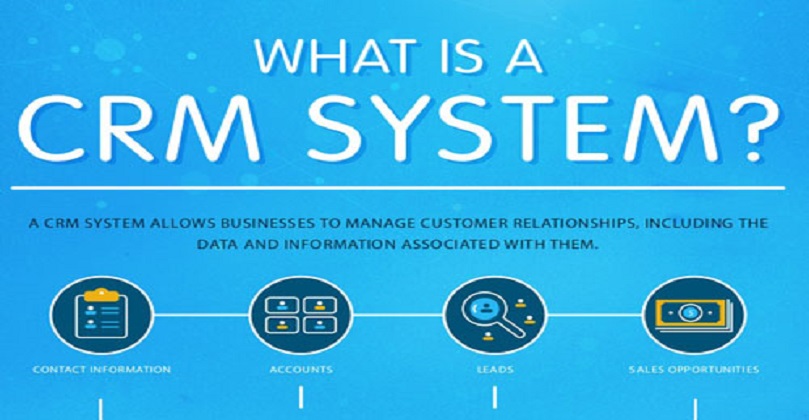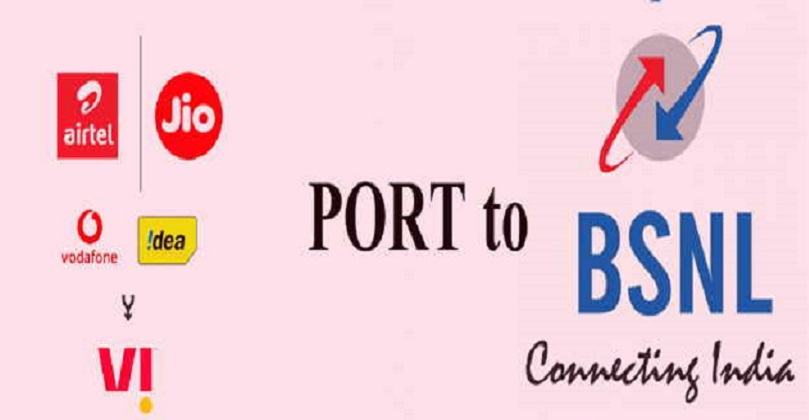Table of Contents
10 Key Benefits a CRM System Can Provide for Your Business: If you have a business, and you want to bring it on Autopilot, that means all the information of the customer can be found in one click, and much more then you must know about what is CRM .
And how Customer Relationship Management works. How can you do Autopilot Marketing by connecting your business to CRM, and how many types are there. What is the full form of CRM? You will find many more important information in this article. So let’s first know that what is CRM.

10 Key Benefits a CRM System Can Provide for Your Business
In digital marketing, CRM is a marketing strategy or approach through which businesses improve relationships with their customers and make those who are not their customers their customers yet. Companies run Lead Generation Campaigns on various platforms to make any person a customer.
CRM is a software within which companies store all their customer’s records or data in an organized form, which can contain information like customer’s name, number, email id, address etc.
Companies store customer data in CRM, hand it over to the sales team, and the sales team takes product feedback from each customer, so that if the product is lacking, it can be improved. Along with this, the sales team makes the leads their customers by telling them the information of the product.
You need training to use CRM software, without training you will not be able to use CRM software.
CRM Full Form
| CRM Full Form | |
| C | Customer |
| R | Relationship |
| M | Management |
Benefits of CRM Here are the benefits of CRM.
In today’s time, all companies are increasing their business through digital marketing, in which the role of CRM is very important. Through CRM, companies keep the complete information of their customers in an organized manner. Well friends, CRM is not a new thing, it was present even before the advent of the Internet.
Better knowledge of customers
It may sound as simple as it sounds, but an undeniable fact that you’ve stored all the information on every contact in one place makes CRM an excellently powerful communication tool.
Like a cheat sheet that provides quick access to key information, a CRM system gives your sales, marketing, and customer service teams a competitive advantage. Secondly, with the help of CRM, you can manage all activities, projects, sales, live chat messages, email exchanges, invoices, orders, contracts.
Better segmentation
No one wants to venture out trying to do business with an unknown crowd. Everyone wants to deal with a perfect audience. When you know who you are addressing, you will deliberately craft your proposal, your strategy, and even your sales pitch! In a nutshell, an honest CRM system helps you better identify who’s basically curious about what you have to supply, who’s perched on the fence, and who’s cold as ice.
Better customer retention
In addition to being a great asset for finding and nurturing your potential and new customers, a CRM is also a great tool to keep your existing customers happy. A CRM system comes with some “customer retention” benefits: It will help you deliver on your promises by reminding you about appointments or when to unfollow emails.
Better anticipation of needs
When we know what to expect, we feel more confident. The same thing applies to business as well. And since a major benefit of getting a CRM system is helping salespeople sell more and selling faster, it’s access to customer interaction history through the entire customer journey that allows sales reps to anticipate customer needs. .
Better and faster communication
Not making your customers wait by responding to their requests quickly can be a sign of professionalism. What’s saving you and your customers time is that CRM system, which gives you a bunch of customizable, easy-to-use email templates, letters, documents, proposals, quotes, invitations, newsletters, and more.
Better protection of data privacy
Finally, let’s address the “talk of the past few years” – the Composite Data Protection Regulation (GDPR)! Its other important thing is to have CRM software that has GDPR-related functionality built-in, in line with the information privacy requirements of the new EU regulation. The main advantage of CRM here is that it will save a lot of your time and energy. Complying with GDPR can be a task in itself, not to mention all the unpleasant legal consequences.
Few examples of popular CRM software
- Salesforce
- ZOHO
- Zendesk
- HubSpot CRM
- Pipedrive CRM
- Sage CRM
- SugarCRM
- FreshWorks
- Keap
- Adynamics
What is CRM Software ? || Benefits of using CRM in your Business
What is a Higher Education CRM System?
A CRM system in the context of higher education refers to a comprehensive software solution designed to manage relationships with students, faculty, alumni, and other stakeholders. Instead of treating students merely as customers, these systems consider the holistic educational journey of every individual, catering to their unique needs and enhancing their experience.
| Feature | Description |
|---|---|
| Admissions Management | Streamline the application process and manage prospective students’ data. |
| Student Engagement | Monitor and improve students’ academic journey and campus experience. |
| Alumni Relations | Keep alumni engaged, fostering a lasting relationship and facilitating donations. |
| Event Management | Organize and promote campus events, workshops, and seminars. |
| Reporting & Analytics | Gain insights into performance metrics and make informed decisions. |
Benefits of Using CRM Systems in Higher Education
1. Enhanced Student Experience: CRM systems offer a personalized approach to student engagement. By analyzing the data, institutions can anticipate student needs, cater to their preferences, and foster a sense of belonging.
2. Efficient Admissions Process: Manual admissions processes can be tedious and error-prone. CRM systems automate these processes, ensuring accuracy and speeding up response times.
3. Robust Alumni Engagement: With CRM, institutions can maintain an active database of alumni, making it easier to engage them in fundraising campaigns, events, or mentorship programs.
4. Data-Driven Decisions: The analytical capabilities of CRM systems provide universities with valuable insights, guiding them towards informed strategic decisions.
Implementation Challenges and Solutions
Despite their numerous benefits, implementing a CRM system in higher education is not without its challenges. Some of the common hurdles include:
- Resistance to Change: Staff and faculty might be resistant to adopting new technologies. Solution: Offer training sessions and demonstrate the system’s benefits to ensure a smoother transition.
- Data Integration: Integrating data from various sources can be complex. Solution: Opt for CRM systems that offer compatibility with existing data sources or employ specialized data integration tools.
- Cost Implications: High-quality CRM systems come with a significant price tag. Solution: Consider the long-term ROI and potential cost savings from improved efficiency and student retention.
Choosing the Right CRM System
When selecting a CRM system for a higher education institution, consider the following factors:
- Scalability: The system should be able to handle growth in terms of student numbers and data complexity.
- User-Friendliness: Intuitive user interfaces ensure that staff and faculty can navigate the system with ease.
- Integration Capabilities: The CRM should seamlessly integrate with other institutional systems like Learning Management Systems (LMS) and financial software.
- Support and Training: Ensure the CRM vendor offers robust support and training sessions for seamless adoption.
Applicant Tracking System (ATS) vs. CRM: Unraveling the Differences
In the world of talent acquisition and relationship management, two tools dominate the conversation: the Applicant Tracking System (ATS) and Customer Relationship Management (CRM) software. At first glance, they might seem to serve similar purposes, but there are significant differences between the two. This article will provide a deep dive into both tools, shedding light on their unique functionalities and how they complement each other in recruitment and sales processes.
| Feature | Applicant Tracking System (ATS) | Customer Relationship Management (CRM) |
|---|---|---|
| Primary Purpose | Manages job applications and candidates throughout the hiring process | Manages relationships and interactions with potential and existing customers |
| Key Users | HR professionals, recruiters | Sales and marketing teams |
| Main Functionality | Job posting, resume parsing, interview scheduling | Lead tracking, sales funnel management, email marketing |
| Data Focus | Candidate data, job requisitions, interview feedback | Customer data, sales opportunities, marketing campaigns |
| Integration | Often integrates with job boards, background check services | Integrates with sales, marketing, and support tools |
Understanding Applicant Tracking Systems (ATS)
An Applicant Tracking System is primarily designed for HR professionals and recruiters. The ATS automates the recruitment process by streamlining tasks such as posting jobs, collecting applications, parsing resumes, and coordinating interviews.
- Job Posting: Many ATS systems allow companies to post jobs directly to multiple job boards with a single submission. This streamlines the process and ensures a consistent message across all platforms.
- Resume Parsing: Once applications start rolling in, the ATS can automatically sort and rank candidates based on specific criteria, like keywords or qualifications.
- Interview Scheduling: Through integration with calendars, the ATS can help recruiters schedule interviews, avoiding the back-and-forth emails.
Decoding Customer Relationship Management (CRM)
On the other hand, CRM software is a tool used primarily by sales, marketing, and customer service teams. Its main purpose is to help businesses manage interactions with both potential and current customers.
- Lead Tracking: CRM systems can track and manage leads as they move through the sales funnel, from the initial point of contact to closing the sale.
- Sales Funnel Management: CRM provides a visual representation of the sales process, showing where each potential customer is in the sales journey.
- Email Marketing: Many CRMs come equipped with email marketing tools, allowing businesses to send targeted emails to specific customer segments.
Where They Overlap
In recent years, the line between ATS and CRM has begun to blur. This is especially true for companies that want to build and nurture relationships with potential candidates, treating them similarly to customers.
- Candidate Relationship Management: Just like a CRM nurtures leads, progressive companies use their ATS to nurture potential job candidates, keeping them engaged until the right position opens up.
- Data Analytics: Both systems offer data analytics features, which provide insights into the effectiveness of recruitment or sales campaigns.
CRM Phone System Integration: Enhancing Customer Experience Through Seamless Connections
In today’s competitive business environment, efficiency and productivity are paramount. Every tool, every application, and every system used by a company can make the difference between success and mediocrity. Among these tools, two stand out in terms of customer relationship management: the Customer Relationship Management (CRM) system and the phone system. When integrated seamlessly, these tools can be a game-changer for any business. This article explores the concept of CRM phone system integration, its benefits, and its implementation.
| Aspect | Description |
|---|---|
| Integration | Combining CRM and phone system for better functionality. |
| Efficiency | Reducing manual data entry and information retrieval. |
| Productivity | Enhanced performance by teams due to streamlined processes. |
| Customer Experience | Improved service quality with contextual interactions. |
| Cost Savings | Reduced overhead costs due to automation. |
Understanding CRM and Phone System Integration
CRM systems have evolved to become the backbone of many businesses, offering functionalities like contact management, sales tracking, and marketing automation. On the other hand, phone systems have always been a primary communication tool, especially for customer support and sales teams. The integration of these two systems ensures that every phone call can be tracked, logged, and associated with the relevant customer profile in the CRM. In essence, it bridges the gap between voice communication and data management.
Why Integrate? The Advantages of Unified Systems
- Enhanced Efficiency: With integrated systems, there’s no need to manually enter call details into the CRM. This not only saves time but also ensures data accuracy.
- Improved Customer Experience: When a customer calls, their information and interaction history pop up in real-time, enabling personalized interactions.
- Better Decision Making: Managers and executives can have a holistic view of customer interactions, allowing for data-driven decisions.
- Streamlined Workflows: Teams can have coordinated efforts, reducing redundancy and ensuring that customers do not receive multiple calls for the same issue.
Implementation Best Practices
If you’re convinced about the benefits, the next step is the implementation. Here are some best practices to ensure a smooth transition:
- Assess Compatibility: Ensure that your CRM and phone system are compatible for integration. Some modern CRMs offer out-of-the-box integration with popular phone systems.
- Engage Stakeholders: It’s essential to involve teams from both the CRM and phone system sides. This ensures that all necessary features are considered and integrated.
- Test Thoroughly: Before a full rollout, conduct thorough testing to ensure there are no glitches or data discrepancies.
- Train Your Team: Ensure that your team is familiar with the new integrated system. This might involve training sessions or workshops.


